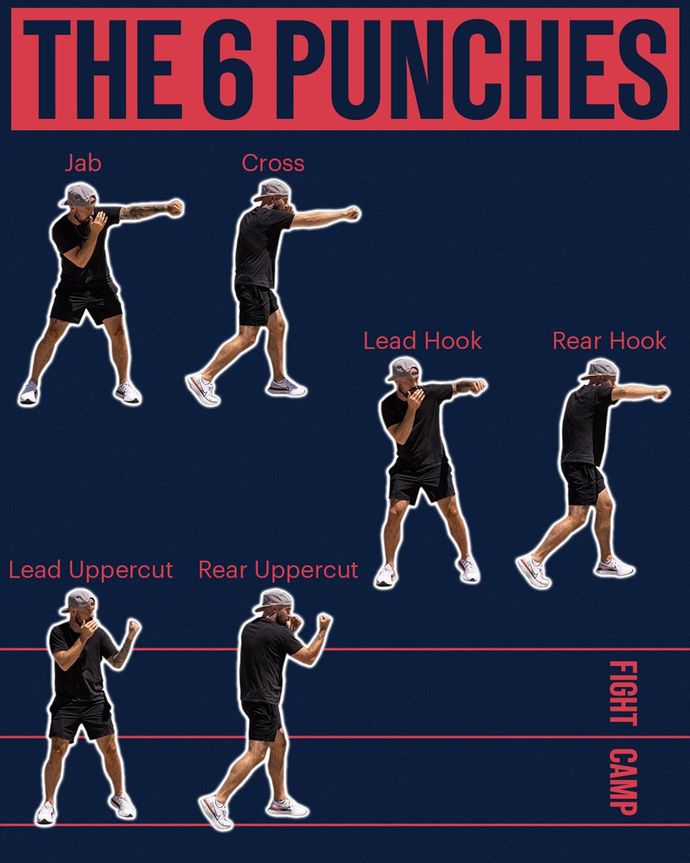
Mastering the Six Basic Boxing Punches: A Beginner’s Guide
Boxing is an electrifying sport that captivates fans around the globe, showcasing the remarkable skills of professional fighters. However, for beginners, the sheer intensity of the sport can be overwhelming. The key to mastering boxing lies in understanding its fundamental elements, particularly the six basic punches that form the backbone of effective boxing techniques.
The Six Basic Boxing Punches
These essential punches are categorized into a straightforward numbering system that not only simplifies learning but also aids in developing various boxing combinations. Here’s a breakdown of the six foundational punches:
- 1 = The Jab
- 2 = The Cross
- 3 = The Lead Hook
- 4 = The Rear Hook
- 5 = The Lead Uppercut
- 6 = The Rear Uppercut
Understanding Punch Types
While there are six punches in total, they can be grouped into four primary categories:
- Jab
- Cross
- Hook
- Uppercut
This categorization is vital, as it introduces variations based on whether the punches are thrown with the left or right hand, each requiring slightly different positioning.
The Punch Number System
The punch numbering system is intentionally designed to enhance memorization and facilitate the creation of effective punching combinations. This system is primarily based on an orthodox boxing stance:
- Even-numbered punches are executed with the right hand.
- Odd-numbered punches are executed with the left hand.
Boxing workouts often utilize these punch numbers to outline drills and combinations. Here are some basic examples:
- 1 – 2: Jab – Cross
- 3 – 4: Lead Hook – Rear Hook
- 5 – 6: Lead Uppercut – Rear Uppercut
For those new to boxing, it’s essential to become familiar with these numbers and combinations, as they are frequently called out during training sessions.
How to Execute Each Punch
Now that you understand the punch numbering system, let’s delve into the execution of each punch:
1. The Jab
- Begin in a guard position with your fists raised.
- Extend your lead arm directly forward, ensuring your fist returns quickly to its original position.
The jab is a quick, rapid strike intended to disrupt your opponent’s rhythm.
2. The Cross
- Maintain your guard position.
- Pivot on your back foot while rotating your hips, extending your rear arm forward.
- Return to the guard position promptly.
The cross is a powerful punch that generates force from your body rotation.
3. The Lead Hook
- Start in a guard stance.
- Shift your weight onto your lead leg and raise your lead arm to shoulder height with a bent elbow.
- Pivot while rotating your body, ensuring your elbow stays close to your face.
This punch can be challenging but is highly effective when executed correctly.
4. The Rear Hook
- Begin in guard position.
- Lift your rear arm to shoulder height with a bent elbow.
- Pivot on your rear foot and rotate your hips as you punch.
The rear hook mirrors the lead hook but utilizes the rear hand for added power.
5. The Lead Uppercut
- Assume a guard stance.
- Bend your knees slightly.
- Drop your lead arm and then drive it upward into an uppercut.
This punch is particularly effective when aimed at an opponent’s chin.
6. The Rear Uppercut
- Begin with fists in guard position.
- Bend your knees into a low stance.
- Drop your rear arm and pivot as you drive your fist upward.
The rear uppercut adds another layer of versatility to your offensive techniques.
Mastering these six basic punches lays the groundwork for any aspiring boxer. As with any skill, practice is essential. Some punches may feel more comfortable than others at first, but with time, you’ll find your rhythm and begin to develop your unique combinations. Every boxer has their preferred techniques, and it’s crucial to diversify your skill set to excel in the ring.

